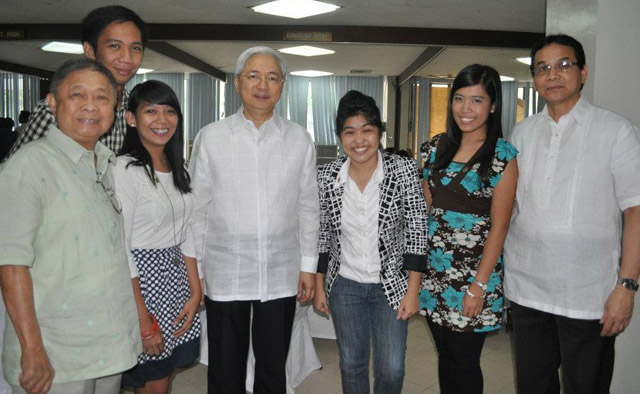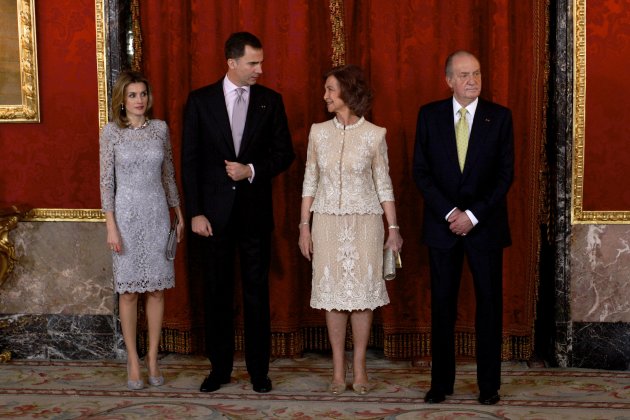'TNT' Pulitzer winner on Time cover
By Jose Katigbak
STAR Washington Bureau
(The Philippine Star)
June 16, 2012
WASHINGTON – Filipino journalist Jose Antonio Vargas, a poster child of illegal immigration in the US, has landed on the cover of Time magazine surrounded by 35 other undocumented young people, their picture emblazoned with the legend “We are Americans, just not legally.”
In a 4,500-word essay in the latest issue of Time, Vargas, who won a Pulitzer Prize as part of a Washington Post team that covered the April 2011 Vietnam Tech massacre, reports on life in “citizenship limbo” and how others coming out like him can change the debate.
Two months after winning the Pulitzer, Vargas outed himself in a New York Times article entitled “My life as an undocumented immigrant.”
He said his mother sent him to live with his grandparents in the US in 1993 when he was 12. At 16 he found out he had a fake green card.
In the Time essay, Vargas said the questions he has been asked since announcing his undocumented status indicate the things people don’t know, the things they think they know but have been misinformed, and the views they hold but do not ordinarily voice.
“I’ve also been witness to a shift I believe will be a game changer for the debate: more people coming out,” he said.
He said at least 2,000 undocumented immigrants, most of them under 30, have contacted him and outed themselves in the past year.
“The contradictions of our immigration debate are inescapable. Polls show substantial support for creating a path to citizenship for some undocumented immigrants – yet 52 percent of Americans support allowing police to stop and question anyone they suspect of being illegal,” he said.
Democrats are viewed as being more welcoming to immigrants, but in the three years since Obama took office his administration has deported 1.2 million people. It took Republican President George W. Bush eight years to deport 1.6 million people, Vargas said.
He said election year politics was further confusing things as both parties scramble to attract Latino voters without scaring off other constituencies.
But the real political flash point, according to Vargas, is the proposed Dream (Development, Relief and Education for Alien Minors) Act, a decade-old immigration bill that would provide a path to citizenship for young people educated in this country.
To be eligible they must have been brought to the United States before the age of 16 and lived in the country for at least five years. The bill never passed.
Vargas said he spends every day wondering what, if anything, the government plans to do with him.
He said after months of waiting for something to happen, he decided to confront immigration officials and asked them if they were planning to deport him.
Despite announcing he is in the country illegally, he has been told that technically he does not exist in the eyes of US Customs and Immigration Enforcement.
Like most undocumented immigrants, he’s never been arrested and therefore not on an ICE list, he said.
“I am still here. Still in limbo, so are nearly 12 million others like me –enough to populate Ohio. We are working with you, going to school with you, paying taxes with you, worrying about our bills with you. What exactly do you want to do with us? More important, when will you realize that we are one of you?” Vargas asked.
By Jose Katigbak
STAR Washington Bureau
(The Philippine Star)
June 16, 2012
WASHINGTON – Filipino journalist Jose Antonio Vargas, a poster child of illegal immigration in the US, has landed on the cover of Time magazine surrounded by 35 other undocumented young people, their picture emblazoned with the legend “We are Americans, just not legally.”
 |
| Filipino journalist Jose Antonio Vargas is at the center of Time magazine’s cover story for June |
In a 4,500-word essay in the latest issue of Time, Vargas, who won a Pulitzer Prize as part of a Washington Post team that covered the April 2011 Vietnam Tech massacre, reports on life in “citizenship limbo” and how others coming out like him can change the debate.
Two months after winning the Pulitzer, Vargas outed himself in a New York Times article entitled “My life as an undocumented immigrant.”
He said his mother sent him to live with his grandparents in the US in 1993 when he was 12. At 16 he found out he had a fake green card.
In the Time essay, Vargas said the questions he has been asked since announcing his undocumented status indicate the things people don’t know, the things they think they know but have been misinformed, and the views they hold but do not ordinarily voice.
“I’ve also been witness to a shift I believe will be a game changer for the debate: more people coming out,” he said.
He said at least 2,000 undocumented immigrants, most of them under 30, have contacted him and outed themselves in the past year.
“The contradictions of our immigration debate are inescapable. Polls show substantial support for creating a path to citizenship for some undocumented immigrants – yet 52 percent of Americans support allowing police to stop and question anyone they suspect of being illegal,” he said.
Democrats are viewed as being more welcoming to immigrants, but in the three years since Obama took office his administration has deported 1.2 million people. It took Republican President George W. Bush eight years to deport 1.6 million people, Vargas said.
He said election year politics was further confusing things as both parties scramble to attract Latino voters without scaring off other constituencies.
But the real political flash point, according to Vargas, is the proposed Dream (Development, Relief and Education for Alien Minors) Act, a decade-old immigration bill that would provide a path to citizenship for young people educated in this country.
To be eligible they must have been brought to the United States before the age of 16 and lived in the country for at least five years. The bill never passed.
Vargas said he spends every day wondering what, if anything, the government plans to do with him.
He said after months of waiting for something to happen, he decided to confront immigration officials and asked them if they were planning to deport him.
Despite announcing he is in the country illegally, he has been told that technically he does not exist in the eyes of US Customs and Immigration Enforcement.
Like most undocumented immigrants, he’s never been arrested and therefore not on an ICE list, he said.
“I am still here. Still in limbo, so are nearly 12 million others like me –enough to populate Ohio. We are working with you, going to school with you, paying taxes with you, worrying about our bills with you. What exactly do you want to do with us? More important, when will you realize that we are one of you?” Vargas asked.







 MANILA, Philippines – Five tertiary schools made it in the
MANILA, Philippines – Five tertiary schools made it in the 















